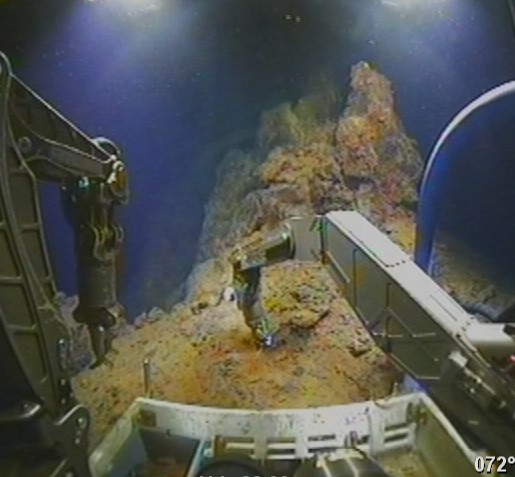Analysis reveals extensive seabed minerals

Sampling from sulphide-deposit, 3500 meters water depth in the Norwegian Sea. (Photo: The Norwegian Petroleum Directorate)
6/7/2019 The Norwegian Petroleum Directorate’s chemical analyses of sulphides and manganese crusts from the Norwegian shelf reveal that the sulphides contain a high content of copper, zinc and cobalt.
The sulphis contains mostly contain iron, but also have a relatively high content of copper (up to 14 per cent in some samples), zinc (3 per cent) and cobalt (less than 1 per cent).
These are important metals as society moves towards increasing electrification. They are also in demand from the industrial sector.
The content of metals in sulphides and manganese crusts from the Norwegian shelf is higher than what is found in samples from other parts of the world.
On the Norwegian continental shelf, it is a known fact that seabed minerals occur in the deeper parts of the Norwegian Sea.
Mapping and systematising
The Norwegian Petroleum Directorate has been assigned the task of mapping the extent of such seabed minerals, and systematising data from the collected samples. Several occurrences of sulphides and manganese crusts have been proven, most recently during the NPD’s voyage in the summer of 2018.
The sulphides were found along the volcanic Mohns Ridge between Jan Mayen and Bjørnøya. Manganese crusts have been proven in several locations along the Vøring Spur and around Jan Mayen.
Important in the green transition
The manganese crusts in the Norwegian Sea fall into two groups. One of these contains around double the amount of REE – Rare Earth Minerals, as compared with samples from the Pacific Ocean and the rest of the Atlantic Ocean.
The other group has lower concentrations. Both groups contain substantially more lithium (20-80 times) and scandium (4-7 times). All of these elements are metals that are important in the green transition.
Updated: 6/11/2019